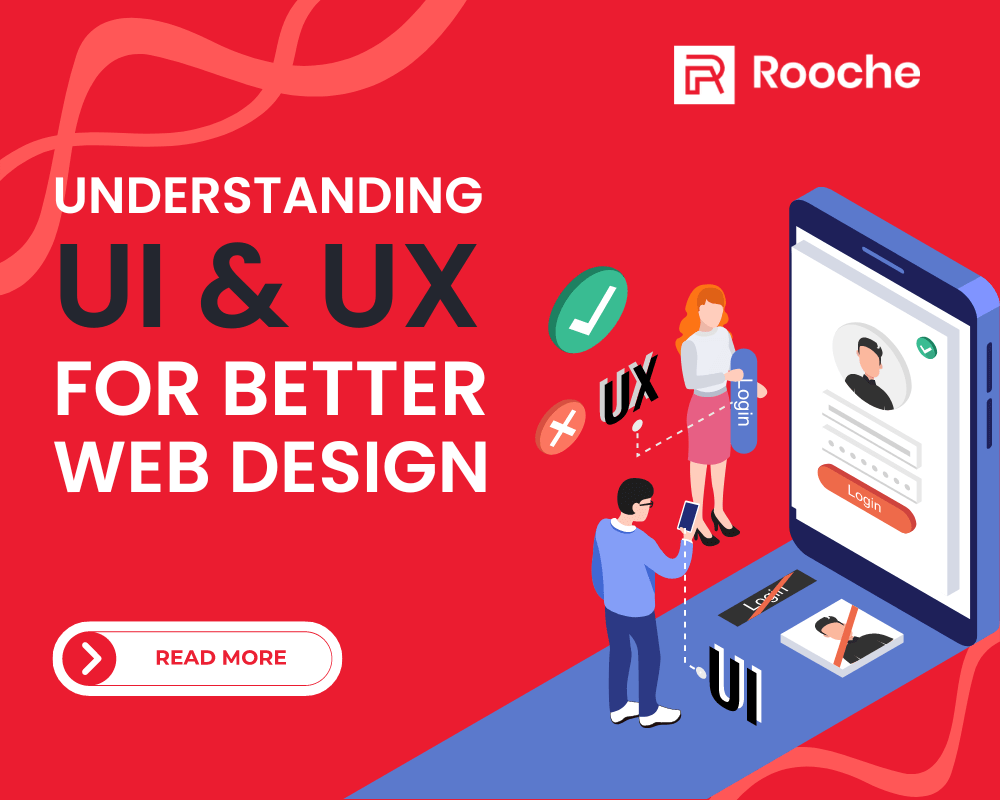Questions to Ask Before You Build A Website for Your Business
A Website for your business is a powerful tool that can help businesses to achieve their goals. It is important […]
Dec 8, 2022
Dec 8, 2022

If you own a website or want to build one, it’s important to understand UX and UI. UX is user experience, and UI is the user interface. When you’re building a website, you need to know how the consumer interacts with your site, what they want out of their experience, and how they navigate it. This can take some time to get right, but your consumers will love the result if you do it correctly.
UX refers to how users interact with the site. Is it easy for them to find what they’re looking for? How does their experience change when they move from page to page? What do they think of your design? It’s important to keep these questions in mind as you build your site because you want your users to have a positive experience. The better their experience is, the more likely they will return to your site and recommend it to others.
Then there’s UI. This refers to the visual components of your site, including the layout, colors, fonts, and designs that you choose. While UI is a minor element of overall UX, it can still impact how people interact with your website. A site that looks old or outdated may make users less likely to engage with it. On the other hand, a well-designed site can help you stand out from competitors and make consumers more likely to trust your brand.
The best way to approach UX is to think about your own experiences while navigating different websites. Think about what you like and what you don’t like. Try to be as specific as possible regarding the design elements that make you feel good or bad about a site. Then think about how these elements relate to the purpose of the site. You’re looking for a way to create an intuitive design that makes sense for users who have never been on the site before.
On the other hand, the best way to approach UI is just as important as UX, but it takes more research. Some people think UI design is just about making things pretty. But in reality, the approach to UI design focuses on user experience and utility. It’s often used in tandem with UX (user experience) design to create web pages that are easy and intuitive to use. User interface design often uses white space and color theory to create a visual hierarchy for content, making it easier for the user to know where to look for information.
To put it simply, UX is a customer-first approach that involves understanding their needs, experiences, motivations, and behaviors to create products that provide meaningful solutions to problems.
UI focuses on how the product feels. The UI designer makes sure that buttons are placed in logical locations on the screen and have an attractive look and feel. They ensure that the product is easy to use by creating interactions between interface elements and users through visual design principles.
UX Website Designers are responsible for creating a user-friendly experience on a website, app, or other digital product. To do this, they must first understand the needs of their users and what might be confusing or difficult for them to navigate. They often draw out diagrams and mockups of how the product should work from the user’s perspective. They look at how people will interact with their products and consider how things like colors, words, and images can help (or hurt) that process.
UX Designers may also perform user testing to see if their designs successfully achieve their goal of making a product easy to use and understand. They also work with teams who develop websites or apps to ensure that their design is appropriately implemented.
A UI designer creates the look, feel, and flow of a website or app. They consider how all the elements—from pop-up menus to call-to-action buttons—work together to give users a seamless, enjoyable experience.
It’s a million-dollar question, isn’t it?
So which is more important? That depends on what kind of product you’re making and what type of experience you want your users to have. But generally, there is no need to choose which one is better because when these two come together—when they’re fused into one seamless experience—that’s when you get something extraordinary. Both are important, and neither is more important than the other.

A Website for your business is a powerful tool that can help businesses to achieve their goals. It is important […]
Dec 8, 2022

In the ever-evolving digital landscape, web design trends play a crucial role in shaping user experiences, engagement, and overall success […]
Aug 7, 2023

The music industry has been turned upside down in recent years by the rise of digital music and mobile apps. […]
Dec 8, 2022
Join our newsletter and be the first to receive future promo and sale updates from Rooche!